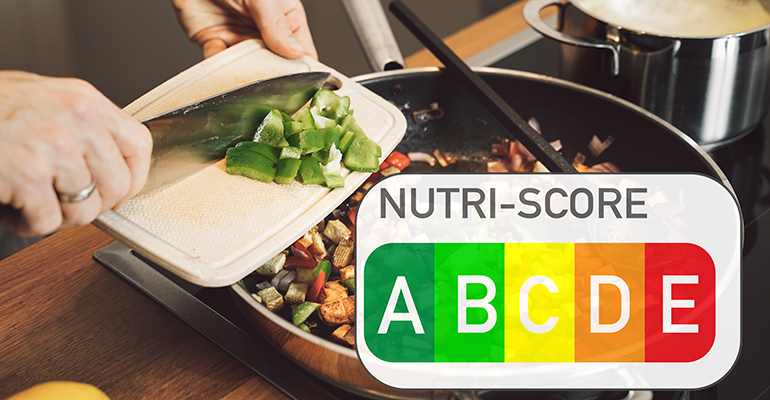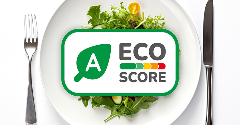News
NutriScore algorithm update a ‘step in right direction’
7 Sep 2022
Campaigning organisation Foodwatch International is hailing the update to the NutriScore algorithm as a “step in the right direction” but says there is still space for further improvement.
The revision, made by The International Scientific Committee (SCC) of the Nutri-Score, addresses notable weaknesses of the traffic light label to now include better differentiation between healthy and less healthy foods.
“The #Nutriscore's algorithm update will lead to fewer green scores,” the citizen-based watchdog states on Twitter.

“For the German market, this means no frozen pizza will get an A or B anymore. Ready-to-eat-meals, cereals and sweet bakery products are also assessed more strictly.”
Berlin-based Foodwatch’s main criticism centres on the algorithm’s approach to assessing sugar content in food which, although is stricter in the latest version, does not, “reflect the latest scientific consensus.”
“The reference value of 90 grams (g) is still clearly too high,” it says.
Regulation change required
Acknowledging the issue, the SCC stresses in its 134-page report that including free or added sugars instead of total sugars in the algorithm is “quite relevant from a scientific perspective but believes that a change in the Food Information to Consumers Regulation (FIC) regulation is firstly required.”
Current guidelines by FIC state a reference value for total sugars set at 90 g per adult per day, which is at odds with World Health Organization (WHO) advice that recommends a maximum of 10% of daily calorie intake in the form of free sugars – approximately 50g of sugar per day.
The SCC believes that FIC regulation recommends the only available internationally acknowledged reference value for total sugars.
“The Nutri-Score is based on the mandatory nutritional information on the back-of-pack, which - among other nutrients - only provides information on the content of total sugars,” foodwatch says.
“The Nutri-Score in its current version is therefore not able to differentiate between free, added or naturally occurring sugars in its algorithm.”
What is Nutri-Score?
Nutri-Score grades food from -15 for the ‘healthiest’ products to +40 for those that are ‘less healthy’.
According to the score achieved, the food is assigned a letter with a corresponding colour from dark green (A – the healthiest) to dark red (F – the unhealthiest).
In its report the Scientific Committee, which led the changes to Nutri-Score, states that while the algorithm generally works well, it still needs changes to better differentiate between favourable and less favourable foods.
Changes implemented includes a stricter assessment of foods high in sugar and salt and a better approach to classifying (fatty) fish without added nutrients (like oil or salt).
“The proposed changes, based on rigorous scientific analyses and tests carried out on various national databases, will improve the efficiency of the Nutri-Score to rank foods according to public health recommendations, and therefore guide consumers to healthier food choices,” says Serge Hercberg, Nutrition Professor at the Université of Sorbonne Paris Nord’s Faculty of Medicine.
 © AdobeStock/Robert Kneschke
© AdobeStock/Robert Kneschke
NutriScore Steering Committee validation: ‘Good news for consumers & public health’
“This very important scientific report was validated by the NutriScore Steering Committee composed of representatives of the public authorities of France, Belgium, Germany, Luxembourg, the Netherlands, Spain and Switzerland,” Hercberg adds, whose work formed the basis of Santé Publique France’s Nutri-Score.
“Thus, the remarkable work done by the Scientific Committee will improve in a near future the performance of NutriScore! This is very good news for consumers and public health!”
Also, up for revision is how the algorithm classifies vegetable oils. Those oils with low levels of saturated fatty acids (rapeseed, walnut, oleic sunflower oil) can reach the B classification, as does olive oil. Sunflower oil moves to the C category.
Nuts and seeds without added salt or sugar, are now classified in A or B, while salted and/or sweetened versions are on average in C or even D.
Also revised is the classification of whole grain products that are (naturally) rich in fibre and processed/refined foods with relatively little fibre (whole grain vs white bread).
The SCC intends to revise the ‘Beverages' and 'Fruit, Vegetables and Nuts' categories planned for the end of 2022 and 2023, respectively.
Nutri-Score in Europe: Will it become mandatory?
While Nutri-Score is already the designated label for six EU-member states and Switzerland (BE, DE, ES, FR, LU, NL + CH), the system is not mandatory.
The European Commission intends to publish a proposal for a European nutrition label by the end of 2022 in which the Nutri-Score is a strong contender as the nutrition label of choice for all EU countries.
The system does have its critics within the region with Italy’s Competition Authority, AGCM, announcing earlier this month that Nutri-Score could not be used in the country without a warning to consumers.
The Authority recognises that NutriScore could mislead consumers on food choices through its classification of foods that the AGCM says introduces a "bias in the judgement that does not incentivise the consumer to make an adequate assessment to follow a diet useful for satisfying the daily intake of nutrients.”
The move forced French multinational retail corporation Carrefour and other distributors using the French nutrition label to withdraw Nutri-Score labelling on its products sold in Italy.
Related news

UK Government overhauls childhood obesity strategy
21 Nov 2025
The UK Government has announced a new package of measures designed to reverse the nation’s childhood obesity epidemic following the release of statistics revealing the scale of the crisis.
Read more
How younger consumers are redefining ingredient choices and rejecting brand loyalty
18 Nov 2025
Gen Z and millennial consumers’ preferences for transparency, functionality, and purpose are “redefining the very nature of consumption itself”, says SPINS.
Read more
New UPF standard hoped to offer consumers ‘coherence and clarity’
10 Nov 2025
Ingredients companies are being urged to enter “a new era of partnership and innovation” following the launch of the industry’s first non-UPF verification scheme.
Read more
Ingredient quantities mislabelled on popular protein bars, independent tests show
5 Nov 2025
Some popular protein bars contain more fat, carbs, and/or sugars than claimed on their labels, independent nutrition testing reveals.
Read more
Does promoting protein content push up plant-based sales?
27 Oct 2025
Promoting the protein content of meat-free products is a more effective sales strategy than adding carbon labels, a study of UK bakery chain Greggs suggests.
Read more
Supplement shoppers seek storytelling and science-backed suppliers
17 Oct 2025
Supplement consumers want specific health benefits that focus on prevention and personalisation, according to data from HealthFocus International.
Read more
Food fraud risks rise as brands fight economic and environmental headwinds
10 Oct 2025
Climate change, geopolitics, regulations, and demand for sustainable products are pushing up food fraud and adulteration risks, warns a world-leading food fraud expert.
Read more
The growing appeal of nutrient-dense food claims
2 Oct 2025
Nutrient-dense claims are rising as consumers reject the “empty calories” of UPFs in favour of products that provide meaningful nutrition with every calorie, Mintel data shows.
Read more
What does MAHA mean for the US nutraceutical industry?
30 Sep 2025
Industry associations have expressed mixed reactions to new policy directions on health and nutrition under the Make America Health Again (MAHA) banner.
Read more
Eco-Score labels improve consumer identification of sustainable foods
22 Sep 2025
The presence of a front-of-pack Eco-Score label improves consumers' accuracy in identifying sustainable food products from 52% to 72%, a study suggests.
Read more